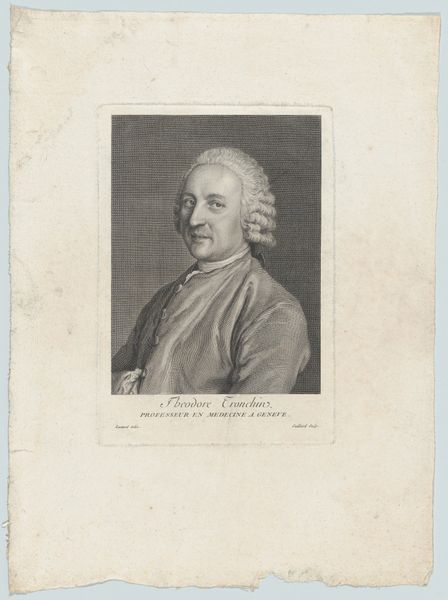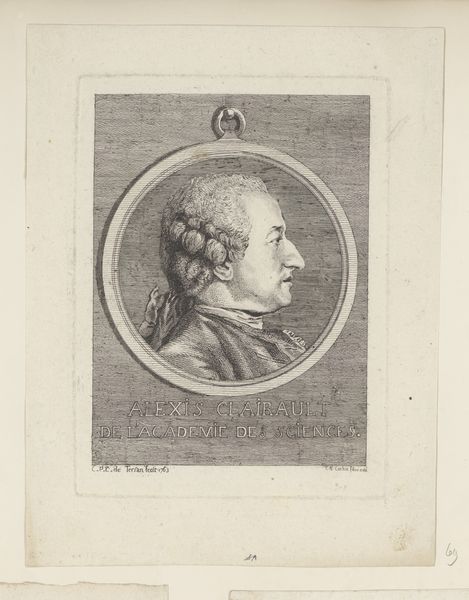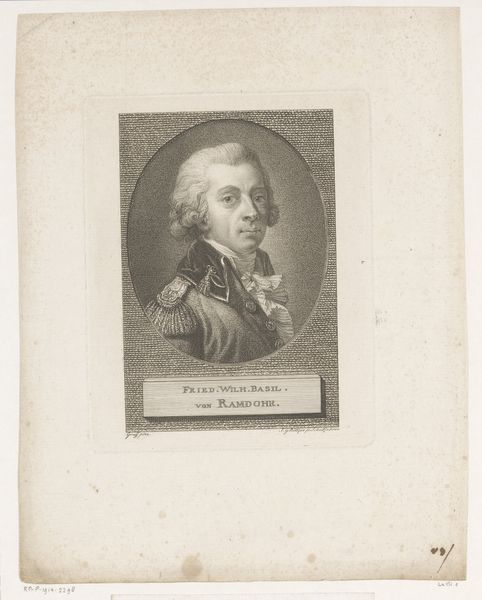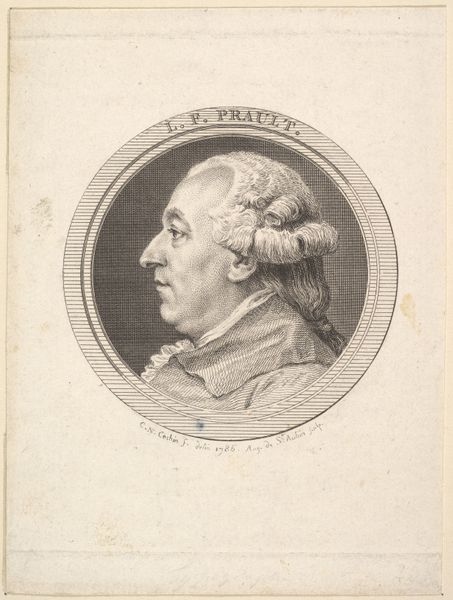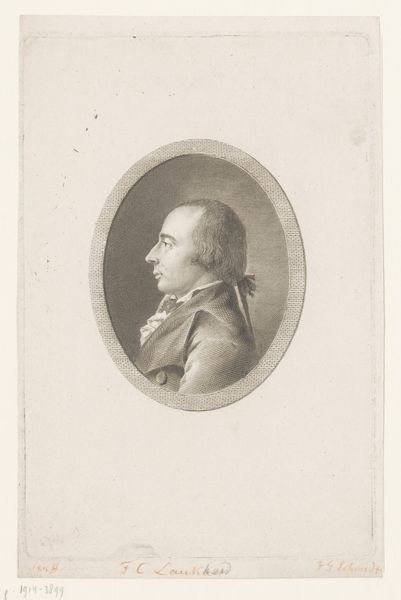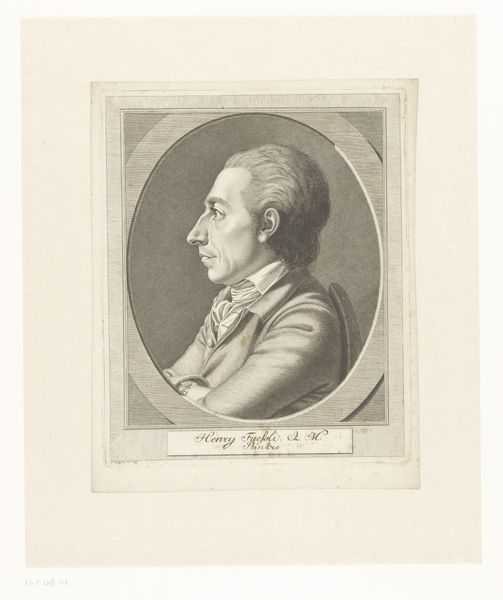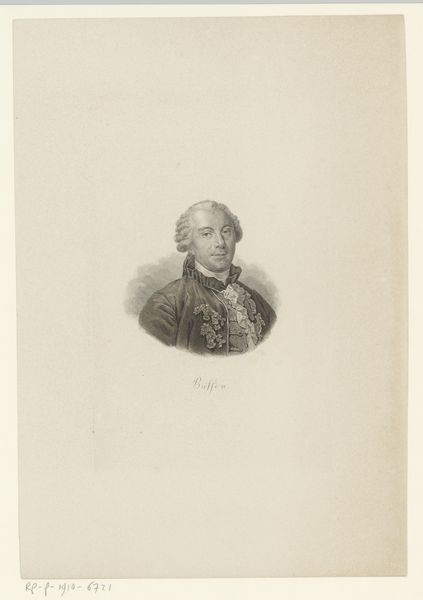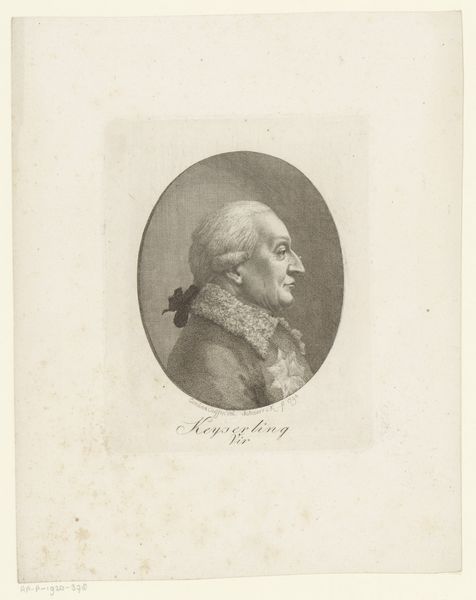
Portrait of Jean-Joseph Cassanéa de Mondonville 1776
0:00
0:00
Dimensions: Image: 3 1/16 × 2 3/8 in. (7.7 × 6.1 cm) Sheet: 6 7/8 × 4 5/8 in. (17.4 × 11.8 cm)
Copyright: Public Domain
Curator: Before us we have a print by Jean Marie Delattre created in 1776, entitled "Portrait of Jean-Joseph Cassanéa de Mondonville." The piece resides here at The Met. Editor: Oh, a striking profile! The precision of the engraving captures such a stern and discerning gaze. It makes you wonder what kind of character he truly was. Curator: Well, portraits during this era were as much about constructing an image of social status as they were about capturing likeness. Consider the deliberate curve of the neck, the rendering of the hair. They exemplify neoclassicist taste combined with some remnants of baroque exuberance. The profile, within an oval, lends it a kind of structured elegance, almost like a cameo. Editor: Agreed, it has an aura of self-importance that's so indicative of the time. I'd be curious about the political context—how someone like Cassanéa de Mondonville would have positioned himself and his social circle within that turbulent prerevolutionary landscape in France. The image suggests someone aligned with power, and it subtly legitimizes that claim through aesthetic choices. Curator: And look at the detailing achieved through line and tonal variations; notice, for example, the delicate hatching around the mouth. Delattre, the artist, expertly manipulates the engraving technique to convey the texture of the skin and the richness of the sitter’s garments. This intricacy amplifies the tactile sensation of the portrait. Editor: It certainly emphasizes the opulence associated with aristocracy, contributing to a potent symbol that would eventually trigger societal discontent. Each choice serves to underline privilege. Looking back from today, we can perceive the visual markers that fuel the French Revolution itself. Curator: Fascinating, isn't it, how this singular image can provoke so many layers of interpretation, bridging artistic execution and socio-historical narrative. Editor: Indeed. The formal mastery becomes inseparable from its profound historical reverberations, highlighting art’s role not merely as representation but as active participant.
Comments
No comments
Be the first to comment and join the conversation on the ultimate creative platform.

